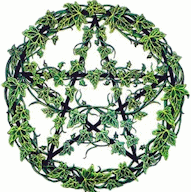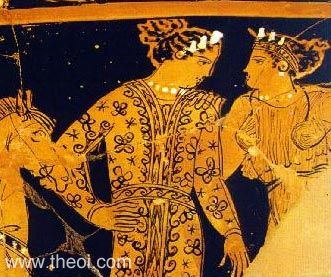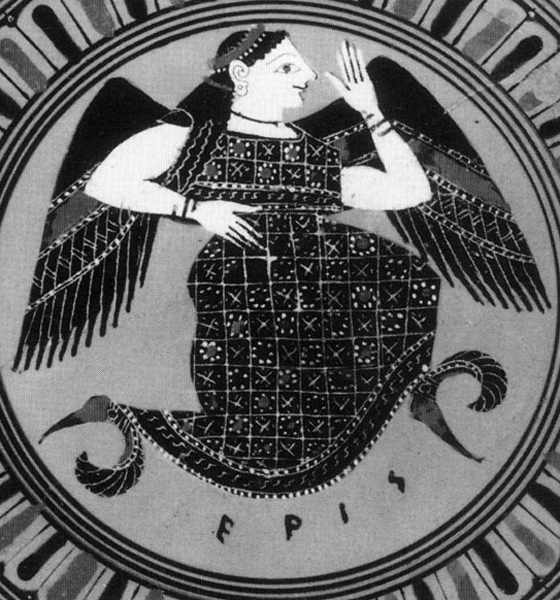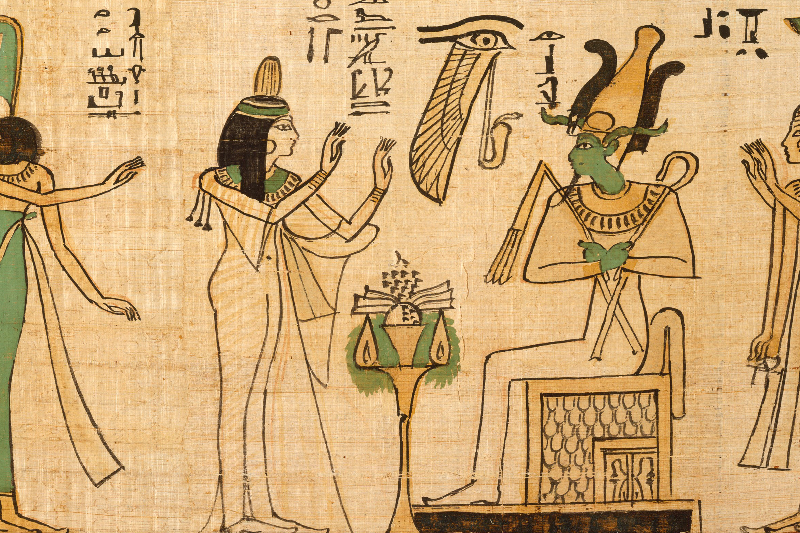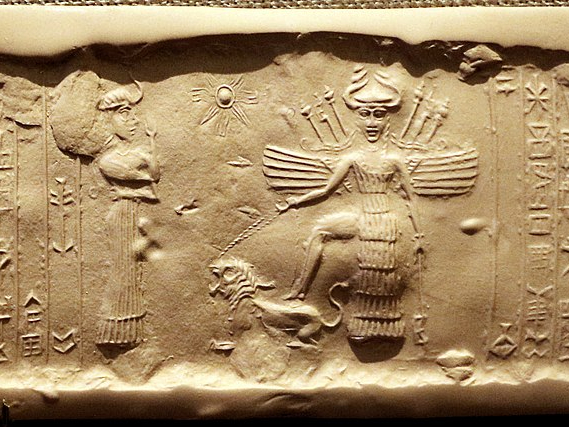Greek mythology has been studied for centuries. Often referred to as “Classical Mythology”, these mythologies have heavily influenced Western literature and culture. As a result, this is one of the best-known mythologies today. The Roman Empire had a very similar mythology.
In Greek culture, gods were less often called upon and more often propitiated. Rather than ask the gods for help, the people would try to avoid the god’s notice or simply stay on the gods’ good side. Modern practitioners tend to call on the gods based on aspects of the universe that they rule over.
This list shows several of the Greek gods and goddesses.
- Aphrodite: Aphrodite is the goddess of passionate love. She is usually depicted as a naked or semi-nude beautiful woman. Her symbols include the magical girdle, myrtle, roses, and the scallop shell. Her sacred animals include doves and sparrows
- Apollo: God of music, arts, knowledge, healing, plague, prophecy, poetry, manly beauty, and archery. Apollo is depicted as young, beardless, handsome, and athletic. His signs and symbols include the laurel wreath, bow and arrow, and lyre. His sacred animals include roe deer, swans, and pythons.
- Ares: God of war and violence, Ares generally represents the chaos of war in contrast to Athena, a goddess of military strategy and skill. He was depicted as a beardless youth, either nude with a helmet and spear or sword or as an armed warrior. His sacred animals include vultures, venomous snakes, dogs, and boars
- Artemis: Artemis is the virgin goddess of the hunt, wilderness, animals, the Moon, and young girls. Both she and Apollo are archery gods. She is often depicted as a young woman dressed in a short knee-length chiton and equipped with a silver hunting bow and a quiver of arrows. Her sacred animal is a deer.
- Athena: Athena is the goddess of reason, wisdom, intelligence, skill, peace, warfare, battle strategy, and handicrafts. She is the patron of the city of Athens and is attributed to various inventions in arts and literature. Her symbol is the olive tree. She is commonly shown as being accompanied by her sacred animal, the owl.
- Demeter: Goddess of grain, agriculture, harvest, growth, and nourishment. She is depicted as a mature woman, often crowned and holding sheafs of wheat and a torch.[6] Her symbols are the cornucopia, wheat-ears, the winged serpent, and the lotus staff. Her sacred animals include pigs and snakes. One of the central myths associated with Demeter involves Hades’ abduction of Persephone and Demeter’s lengthy search for her. Demeter is one of the main deities of the Eleusinian Mysteries, in which the rites seemed to center around Demeter’s search for and reunion with her daughter, which symbolized both the rebirth of crops in spring and the rebirth of the initiates after death.
- Dionysus: God of wine, fruitfulness, parties, festivals, madness, chaos, drunkenness, vegetation, ecstasy, and the theater. He is often in the company of his thiasos, a group of attendants including satyrs, maenads, and his old tutor Silenus. His sacred animals include dolphins, serpents, tigers, and donkeys.
- Eris: Goddess of chaos, discord, and strife, Eris had no temples in ancient Greece. Eris enjoyed a revival as the goddess of chaos in discordianism.
- Hades: King of the underworld and the dead. He is also a god of wealth. His consort is Persephone.His sacred animals include the screech owl. In the mystery religions and Athenian literature, Plouton (“the Rich one”) was his preferred name, because of the idea that all riches came from the earth.
- Hecate: Goddess of magic and crossroads
- Hephaestus: God of fire, metalworking, and crafts, Hephaestus is the smith of the gods. He was usually depicted as a bearded, crippled man with hammer, tongs, and anvil, and sometimes riding a donkey. His sacred animals include the donkey, the guard dog, and the crane. Hephaestus used the fire of the forge as a creative force.
- Hera: Queen of the gods, and goddess of women, marriage, childbirth, heirs, kings, and empires. She is the goddess of the sky and the wife of Zeus. She was usually depicted as a regal woman in the prime of her life, wearing a diadem and veil and holding a lotus-tipped staff. Although she is the goddess of marriage, Zeus’s many infidelities drive her to jealousy and vengefulness. Her sacred animals include the heifer, the peacock, and the cuckoo.
- Hermes: God of boundaries, travel, trade, communication, language, writing, cunning and thieves. Hermes was also responsible for protecting livestock and presided over the spheres associated with fertility, music, luck, and deception. Hermes is the messenger of the gods. Oddly, his sacred animals include the tortoise.
- Hestia: Goddess of the hearth, home, and domesticity. She appeared as a modestly veiled woman. Her symbols are the hearth and kettle. She plays little role in Greek myths, and although she is omitted in some lists of the twelve Olympians in favour of Dionysus, no ancient tale tells of her abdicating or giving her seat to Dionysus.
- Pan: Pan is the god of the wild, shepherds and flocks, rustic music and impromptus, and companion of the nymphs. He has the hindquarters, legs, and horns of a goat, in the same manner as a faun or satyr. With his homeland in rustic Arcadia, he is also recognized as the god of fields, groves, wooded glens, and often affiliated with sex; because of this, Pan is connected to fertility and the season of spring.
- Persephone: Goddess of spring, Queen of the Underworld, wife of Hades and daughter of Demeter and Zeus. Her symbols include the pomegranate, grain, torches, wheat and the asphodelus. After her abduction by Hades, she was forced to split the year between the world of the dead with her husband and the world of the living with her mother. She was worshipped in conjunction with Demeter, especially in the Eleusinian Mysteries. In ancient art she is usually depicted as a young woman, usually in the scene of her abduction.
- Poseidon: God of the sea, rivers, floods, droughts, and earthquakes. He rules one of the three realms of the universe, as king of the sea and the waters. In art he is depicted as a mature man of sturdy build, often with a luxuriant beard, and holding a trident. His sacred animals include the horse and the dolphin.
- Zeus: King of the gods, ruler of Mount Olympus, and god of the sky, weather, thunder, lightning, law, order, and justice. In art, he is depicted as a regal, mature man with a sturdy figure and dark beard. His usual attributes are the royal scepter and the lightning bolt. His sacred animals include the eagle and the bull.
This page is a brief overview of some of the most popular gods and goddesses of this pantheon. If you are drawn to a particular pantheon, you should do further study of that culture and mythology. Every culture has a different view of how powerful their gods are, whether they can die, and how the gods are to be approached. You should always try to approach a god or goddess in a way similar to the culture which worships that being.
